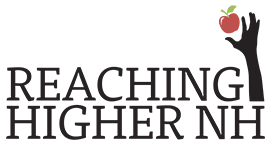New Hampshire’s only online K-12 school, the Virtual Learning Academy Charter School (VLACS), is revolutionizing online learning–and the method that states fund online learning. The model succeeds through a combination of “low-stakes” funding, affirming New Hampshire’s commitment to competency learning, and rejecting the for-profit models that a lot of other states use, reported iNACOL.
Most states have one or more online learning schools, and over 300,000 students attend school online. But many states, including Ohio, are looking for better ways to fund them.
VLACS gets paid for performance: courses are divided into competencies, and VLACS gets a a prorated sum for the ones the student has mastered. If a student only completes half the course, VLACS gets half of the money. It places the incentive on learning and teaching over stacking enrollment lists:
The school earns revenue every time a student completes an assignment. This means that if a student completes 50% of a course, the school can receive 50% of the per-course funding rate from the state. In a high-stakes model, as seen in Florida Virtual School, revenue is earned when a student passes an end-of-course exam and earns a passing grade in the course. This scenario allows for a situation to occur in which a student can make it through the entirety of a course with a passing grade, but fail the EOC exam and force the school to absorb all of the expenses undertaken in teaching that student.
The completion-based method actually saves the state money. Brick-and-mortar schools bill the state based on a figure known as Average Daily Membership (ADM), which calculates the number of students enrolled in the district, from which the state calculates education funding. But with the completion-based model, VLACS got funding for the portion of class they’ve completed:
For example, in 2014, the school converted their student completions into ADM and received $5.5 million in funding. Had they billed the state based on ADM alone, they would have been allocated $12 million.
Students can take some or all of their courses through VLACS. But public schools don’t miss out on critical school funding if a student chooses to take a few of their courses online. New Hampshire pays both the district and VLACS for the part-time student. This way, VLACS is truly a compliment to our public schools, not a threat.
The model treats students as people–not sources of funding. And that’s why it’s working so well.
Read the full article here.








